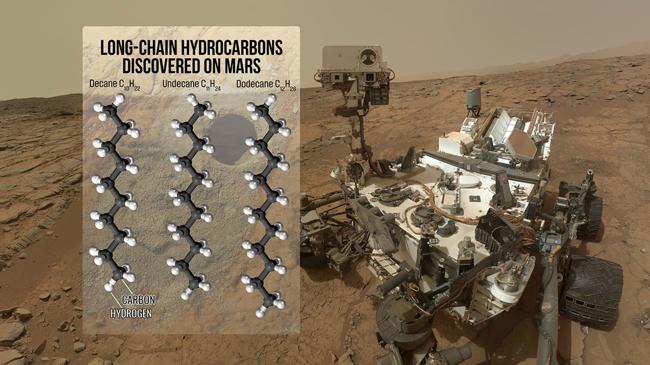Summary
NASA’s Curiosity Rover has discovered long carbon chains on Mars. On Earth, molecules like these are overwhelmingly produced by biological processes.
Source: Live Science on MSN.com

AI News Q&A (Free Content)
Q1: What is the significance of the Curiosity Rover's discovery of long carbon chains on Mars?
A1: The discovery of long carbon chains by NASA's Curiosity Rover on Mars is significant because these molecules are predominantly associated with biological processes on Earth. This finding suggests that Mars may have once had conditions suitable for life, or it could provide insights into non-biological processes that form such carbon structures. This is a major step in astrobiology, as it opens new avenues for understanding Mars' past environment and potential habitability.
Q2: How does the discovery of carbon chains on Mars relate to the hypothesis about Mars' ancient hydrology?
A2: The detection of carbon chains is related to hypotheses about Mars' ancient hydrology. Research indicates that Mars' sulfate-rich rocks, studied by rovers like Curiosity, may have formed from upwelling groundwater in a CO2-rich atmosphere. This process could have sequestered carbon, affecting Mars' climate and habitability. The presence of these carbon molecules may support theories of past water activity and global hydrology on Mars, crucial for understanding its ancient climate.
Q3: What role does the Curiosity Rover play in current Mars exploration missions?
A3: Curiosity plays a crucial role in Mars exploration by investigating the planet's geology and climate, assessing past habitability, and preparing for future human missions. It provides valuable data on Martian sedimentary rocks and environmental conditions. Its design and mission objectives have influenced subsequent missions, such as the Perseverance Rover, emphasizing its lasting impact on Mars exploration.
Q4: How do the temperature measurements from the Curiosity Rover aid in understanding Martian climate?
A4: Temperature data from Curiosity, along with other missions like the Emirates Mars Mission, help create a comprehensive picture of Martian climate. By comparing surface temperature variations recorded by Curiosity with orbital data, scientists can refine climate models and improve predictions for future missions. This data is crucial for understanding diurnal temperature changes and their implications for Martian weather and surface conditions.
Q5: What are the challenges and solutions in enhancing rover mobility on Mars?
A5: Maintaining rover mobility is vital for mission success. Challenges include rough terrain and technical malfunctions. Research has developed autoencoder-driven anomaly detection to monitor Curiosity's mobility, identifying issues before they become critical. This enhances the rover's operational longevity, allowing for continued exploration and data collection on Mars.
Q6: What technological advancements have been implemented in the Curiosity Rover to support its mission?
A6: Curiosity is equipped with advanced scientific instruments, including a suite for analyzing samples and environmental conditions. It uses a combination of cameras, spectrometers, and sensors to collect data. Recent advancements focus on improving remote monitoring and predictive maintenance to address mechanical wear and enhance its operational capacity over extended periods.
Q7: How does the discovery of carbon chains impact future Mars exploration missions?
A7: The discovery of carbon chains by Curiosity could redefine objectives for future Mars missions. It highlights the need to explore areas with potential biosignatures and refine methods for detecting life-related molecules. Upcoming missions may focus on retrieving samples for detailed analysis on Earth, enhancing our understanding of Mars' potential for past life and guiding the search for extant life.
References:
- Curiosity (rover) - https://en.wikipedia.org/wiki/Curiosity_(rover)




